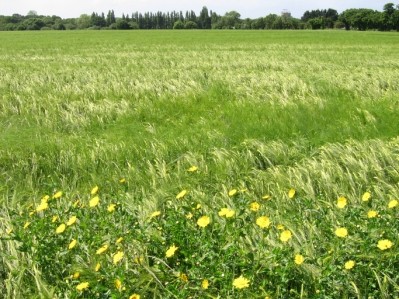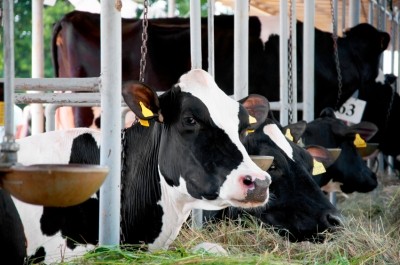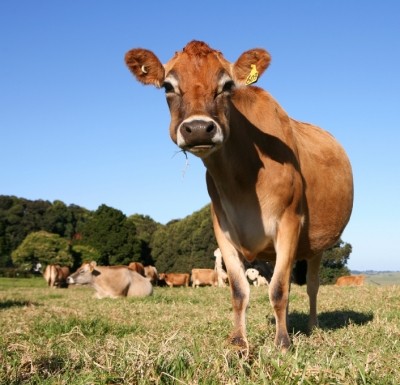Use of supplemental corn and canola meal can boost dairy cow production, finds Australian research
![[pic: (c) istock.com/zodebala]](/var/wrbm_gb_food_pharma/storage/images/_aliases/wrbm_large/1/3/2/4/534231-1-eng-GB/Use-of-supplemental-corn-and-canola-meal-can-boost-dairy-cow-production-finds-Australian-research.jpg)
A team of Australian researchers reported results of experiments looking at both the use of supplements in dairy cattle diets and where they were fed in the Journal of Dairy Science.
“Inclusion of corn grain and canola meal can increase milk production even at similar metabolizable energy [ME] intakes, and that it does not matter whether these supplements are fed as a PMR [partial mixed ration] or in the parlor and paddock,” they said.
Questions about supplement use
Although many dairy cattle are fed on pasture, in parts of Australia grazing is often supplemented with either grains or concentrates offered in the milking parlor and forage offered in the paddock, said the researchers.
They explained that, recently, dry conditions have placed greater emphasis on the use of supplements in dairy cattle diets in Australia.
Supplemental grain can cause both an increase in milk production and the decrease of the marginal milk response, they said. Marginal milk considers the cost to produce an additional amount of milk.
One goal was to see if the advantages gained from using a PMR could be replicated through feeding in the milking parlor rather than using a feed pad, said researchers. An additional goal was to study milk production of cows getting a PMR and larger amount of pasture.
The four hypotheses to be tested included: feeding more of a wheat supplement and hay would improve energy corrected milk (ECM) production; that use of a diet that is ‘isoenergetic’ with the wheat diet, but that includes wheat, corn, canola and alfalfa as a PMR, will improve ECM production; that feeding the PRM in the milking parlor as a grain mix and offering alfalfa in the paddock will produce similar results to use of the PMR; and that cows will have the best response to a PRM and increased grazing allotment.
Experiment details
In the experiment, 192 cows, 16 with rumen fistulas, were separated into eight groups of 24 and assigned to one of four feeding regimes for 14 days, said researchers.
The control groups received limited ryegrass pasture with a milled wheat supplement fed during milking and alfalfa hay offered in the paddock, they said. The formulated grain mix (FGM) diet included restricted ryegrass pasture with a grain mix that included wheat, corn and canola meal fed in the milking parlor along with alfalfa hay.
The third treatment, low pasture allowance (PMRL), include pasture with an added PMR of wheat, corn, canola meal and alfalfa and presented after milking on a feed pad, they said. During milking the group got a limited amount of grain.
The fourth treatment, high pasture allowance (PMRH), was similar to the PMRL diet with additional ryegrass pasture, said the Australian scientists.
“For all strategies, supplements provided the same metabolizable energy and grain: forage ratio [75:25, dry matter (DM) basis],” said researchers. “Each group of 24 cows was further allocated into 4 groups of 6, which were randomly assigned to receive 8, 12, 14, or 16 kg of DM supplement/cow per d.”
Samples of the rumen fluid were collected and checked for VFA and ammonia concentration, they said. Milk yield was measured for every milking and concentration for fat and protein were taken for three days per week.
Results
“This experiment showed that when high amounts of supplements were fed to dairy cows grazing a restricted pasture allowance in early lactation, ECM production was greater when the supplements were fed as a PMR containing corn grain and canola meal, compared with feeding the same amount of ME as wheat grain in the milking parlor and alfalfa hay in the paddock,” they said.
When the grain components of the PMR were mixed and fed in the parlor at milking, with the forage component fed in the paddock, the same ECM yield was achieved, said the researchers.
In cows fed PMR while also offered a high pasture allowance, pasture intake was further increased, with a coincident increase in milk production, although this resulted in higher postgrazing pasture masses and reduced pasture utilization, explained the team.
Much of the increased response in cows fed according to the FGM and PMR strategies was associated with the arrested decline in milk fat concentrations as supplement intake increased, compared with the marked decline in milk fat concentrations observed in the control cows, they said.
“Pasture DMI and estimated ME intake from pasture were affected by feeding strategy, and were higher for PMRH cows than cows on the other feeding strategies, and higher for FGM than control cows,” said the dairy specialists. “Pasture utilization was also affected by feeding strategy, being lower in the PMRH treatment than the other treatments, and higher for the FGM treatment than the control treatment.”
The group getting the PMRH diet had the highest production of energy-corrected milk and the control group the lowest, said the researchers.
“Positive linear responses to increasing amounts of supplement were observed for yield of milk, energy-corrected milk, fat, and protein for cows on all 4 supplement feeding strategies,” they said.
The concentration of milk fat fell with added amounts of supplement, with the reduction being greatest for cows on the control diet, while the amounts of protein in the milk improved with additional supplementation, found the researchers.
Protein concentration was greater for the FGM, PMRL and PMRH diets.
No differences were found in daily mean pH for cows in the different groups, said the scientists. Diets also had little influence on concentration of VFA for the cows.
“These results have important practical implications in that they show the potential for increasing milk production by carefully considering the composition of supplements offered to grazing cows. It was also shown that the dietary grain components could be delivered using existing feeding infrastructure in the parlor: this makes these feeding strategies relevant to a greater number of farmers in the pasture-based dairy industries of Australia and elsewhere, the majority of whom do not have feed pads or mixer wagons,” concluded the team.
Source: Journal of Dairy Science
Title: Milk Production Responses to Different Strategies for Feeding Supplements to Grazing Dairy Cows
DOI: doi:10.3168/jds.2015-9834
Authors: MJ Auldist, LC Marett, JS Greenwood, MM Wright, M Hannah, JL Jacobs, WJ Wales









